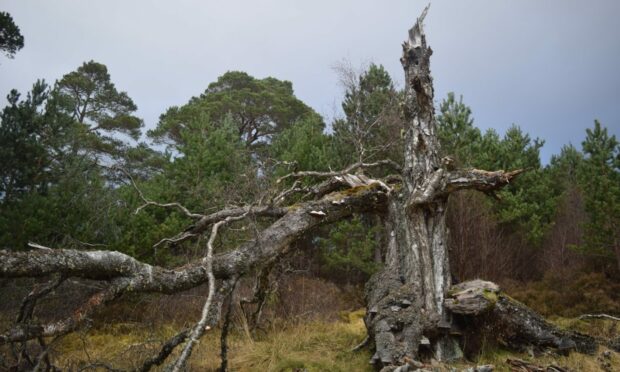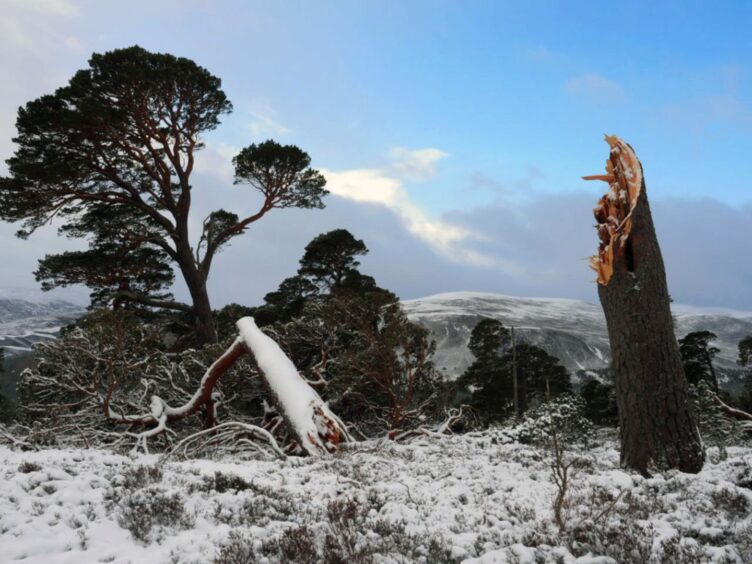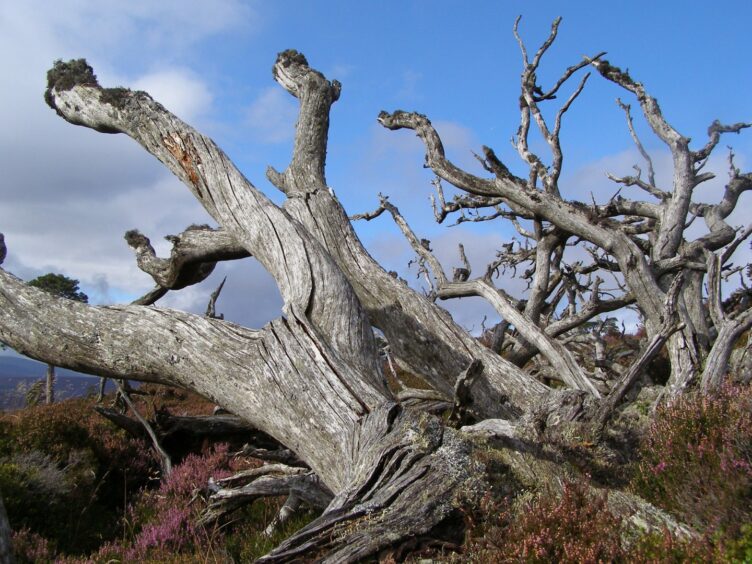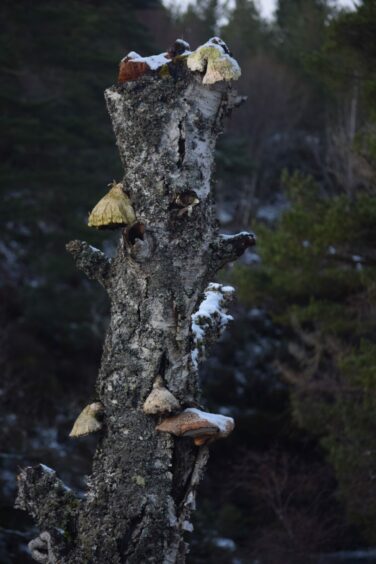For decades we have cleared away fallen trees from forests in an effort to make woods look “tidy” but this is a practice that has to stop, according to experts.
What looks like dead wood lying on the forest floor is actually full of life.
Hundreds of highly specialised species of invertebrates, beetles and fungi survive only on these rotting logs and by removing their habitat, we are removing the beating heart of woodlands.
Hundreds of trees toppled by recent storms
Scots Pines are the elders of Mar Lodge Estate. Some of them are 350 years old and have grown curved and bulging with age.
“We call them the granny pines,” said Shaila Rao, conservation manager of the estate.
These are veteran trees which have flourished thanks to careful management, but even the best management in the world can’t protect them from the weather.
Storms Arwen, Malik and Corrie devastated woodlands across the north and north-east. Mar Lodge’s old granny pines didn’t get off lightly.
“We’ve had hundreds of trees down,” Shaila said. “A mix of some of our oldest trees and some plantations from the 1970s.”
But unlike the huge clean-up operation happening at sites across Scotland, the fallen trees of Mar Lodge are being left where they fell.
There is life after death for deadwood
This is because Mar Lodge Estate is managed for conservation, Shaila explains.
“Our main goal is woodland restoration and improving habitats for biodiversity,” she said.
“So even if trees are lying across a track we just cut them and shift them to the side.”
As it gently rots, the deadwood springs into life once more.
It becomes home to a whole suite of fungi, lichen and invertebrates which survive only on wet, decaying wood.
Further up the food chain, deadwood also morphs into nesting sites for birds, breeding grounds for bats and dens for pine martins, who all enjoy the feast of critters living inside the trunk of these old trees.
“Some of the invertebrates are so specialised that they are called deadwood invertebrates, or saproxylic invertebrates,” Shaila said. “They need this deadwood to survive.”
Eventually the tree will break down entirely, crumbling and disintegrating until it becomes a part of the soil.
The carbon which was stored in the tree is then sequestered in the soil and absorbed into the landscape forever.
Addressing biodiversity with deadwood
All this is essential for addressing Scotland’s twin crises of biodiversity loss and climate change.
As a conservation manager, Shaila has been working for years to regenerate Mar Lodge’s woodland and improve the range of species it plays host to.
“Deadwood is incredibly important for biodiversity,” she said.
“Without it, you can easily be missing a whole range of species.”
In the past, all this wood would have been removed and typically used for firewood.
Today a lot more is known about the importance of deadwood in creating habitats, but it is still being cleared across the country, mostly because it looks unsightly.
“In a wild, natural woodland you’d expect about a third of the wood to be dead,” said Shaila.
But in most managed woodlands, it is far, far less than this.
“We need to change people’s perceptions of what a healthy woodland looks like, they shouldn’t all be perfectly neat and green.”
In truth, there may in fact be more life in a dead tree than a living one.













